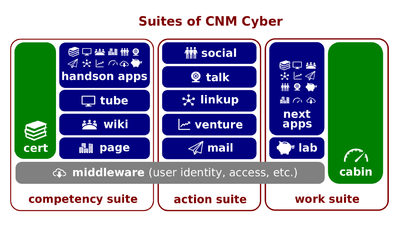Difference between revisions of "Project Parties and Roles"
(→Script) |
(→Script) |
||
| Line 8: | Line 8: | ||
:No doubts. An adult doesn't have to hire anyone to buy a bicycle. Work on bigger and costlier ''projects'' commonly involves two parties. One orders [[project work]] and another delivers the [[work product]]. | :No doubts. An adult doesn't have to hire anyone to buy a bicycle. Work on bigger and costlier ''projects'' commonly involves two parties. One orders [[project work]] and another delivers the [[work product]]. | ||
| − | :[[Enterprise administration]] is what [[project | + | :[[Enterprise administration]] is what [[project owner]]s or their assignees do. They identify their [[business need]], initiate a [[project]], and allocate some budget for the project work. |
:For [[Waterfall project]]s, these representatives may be called | :For [[Waterfall project]]s, these representatives may be called | ||
Revision as of 03:40, 28 November 2020
Project Parties and Roles (hereinafter, the Lectio) is the lesson part of Project Work Essentials lesson that introduces its participants to project management concepts. This lesson belongs to the CNMCT Entrance section of the CNM Cyber Placement.
Content
The predecessor lectio is What Project Work Is.
Script
- No doubts. An adult doesn't have to hire anyone to buy a bicycle. Work on bigger and costlier projects commonly involves two parties. One orders project work and another delivers the work product.
- Enterprise administration is what project owners or their assignees do. They identify their business need, initiate a project, and allocate some budget for the project work.
- For Waterfall projects, these representatives may be called
The paying customer is the mandatory role on that side. The customer may hire a product owner, project sponsor, or other people whose area of responsibility is making sure that the customer's money are spent on the product that the customer looks for and that is delivered on time.
- Another side is project management, which involves actually spending the customer's money on the product and product delivery that the customer looks for.
- If the project work is or can be predicted, the project manager plans the development, discusses the plan with the customer's representative, and executes the approved plan.
- If the project work cannot be predicted, manager's opportunities to plan are limited. Agile methodologies address that issue. Developers usually work in iterations and, as soon as new increments are developed and new data is discovered, discuss the future product and its delivery with the customer's representative. Scrum Masters or similar ceremonial roles control the development process.
- Project managers control the development of the right product at the right budget and on the right schedule. Scrum Masters don't deal with work products and deliveries; instead, Scrum Masters make sure that the development goes according to the agreed rules.
- In CNM Agile, a project manager is rarely a dedicated role; project management is distributed and projects are managed at a micro-level.
Key terms
Closing
The successor lectio is Tips for Project Coordinators.
